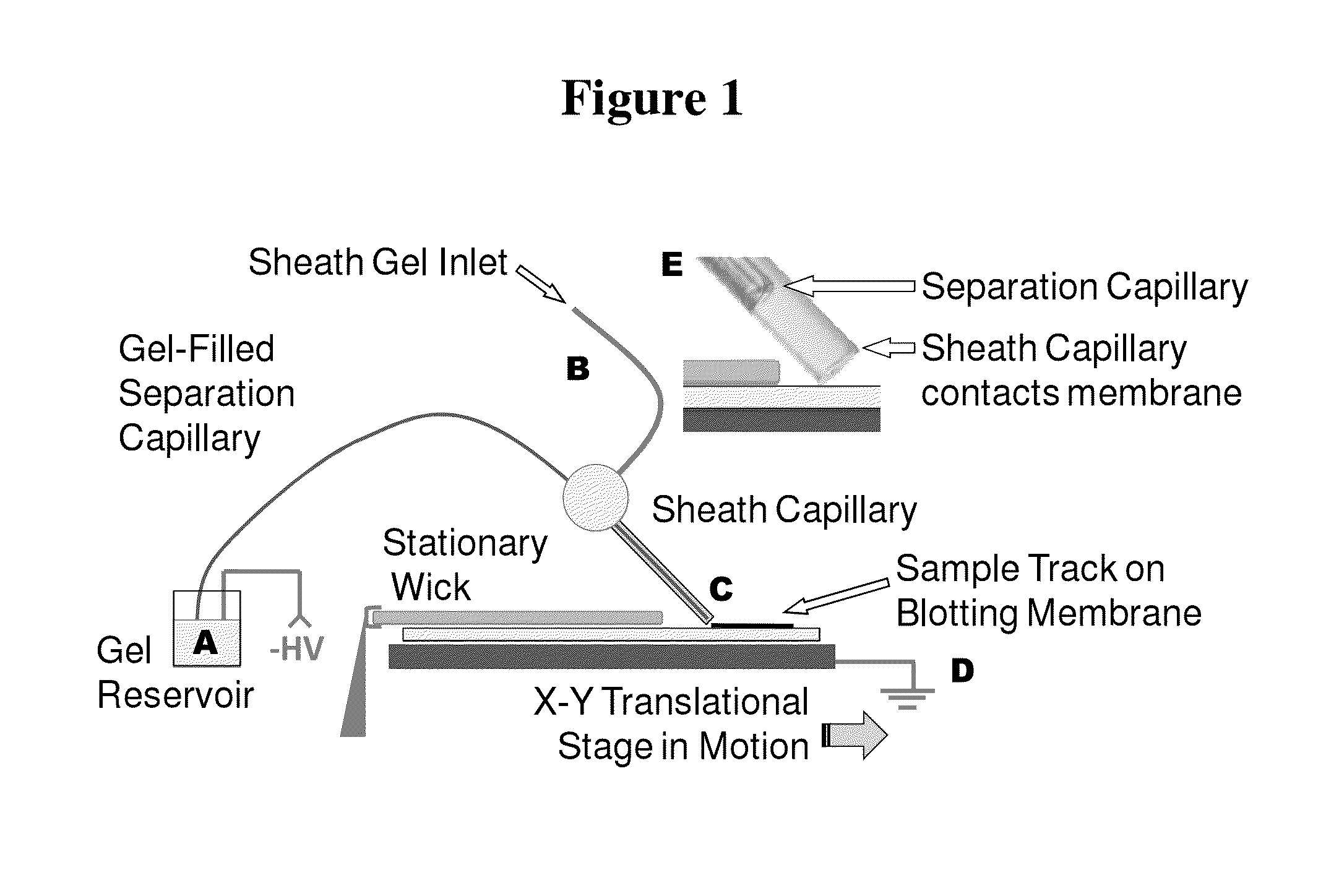Microscale western blot
a micro-scale western blot and electrophoresis technology, applied in the direction of fluid pressure measurement, liquid/fluent solid measurement, peptide measurement, etc., can solve the problems of incompatible with sample limited analysis, manual intensive western blot, and inability to analyze sample limitedly, so as to promote the binding of separated protein components, stable electrophoresis, stable electrophoresis and binding
- Summary
- Abstract
- Description
- Claims
- Application Information
AI Technical Summary
Benefits of technology
Problems solved by technology
Method used
Image
Examples
Embodiment Construction
[0039]The following description of technology is merely exemplary in nature of the subject matter, manufacture and use of one or more inventions, and is not intended to limit the scope, application, or uses of any specific invention claimed in this application or in such other applications as may be filed claiming priority to this application, or patents issuing therefrom. A non-limiting discussion of terms and phrases intended to aid understanding of the present technology is provided at the end of this Detailed Description.
[0040]The present technology relates to electrophoresis and blotting systems that include a capillary or microfluidic channel. In some embodiments, a highly miniaturized Western blot is provided that uses capillary electrophoresis (CE) separation of SDS-protein complexes directly coupled to a PVDF immunoblotting membrane. This is achieved by dragging a gel-sheathed, gel-filled separation capillary along the surface of a blotting membrane. High voltage is applied...
PUM
| Property | Measurement | Unit |
|---|---|---|
| Time | aaaaa | aaaaa |
| Capillary wave | aaaaa | aaaaa |
| Wettability | aaaaa | aaaaa |
Abstract
Description
Claims
Application Information
 Login to View More
Login to View More - R&D
- Intellectual Property
- Life Sciences
- Materials
- Tech Scout
- Unparalleled Data Quality
- Higher Quality Content
- 60% Fewer Hallucinations
Browse by: Latest US Patents, China's latest patents, Technical Efficacy Thesaurus, Application Domain, Technology Topic, Popular Technical Reports.
© 2025 PatSnap. All rights reserved.Legal|Privacy policy|Modern Slavery Act Transparency Statement|Sitemap|About US| Contact US: help@patsnap.com



